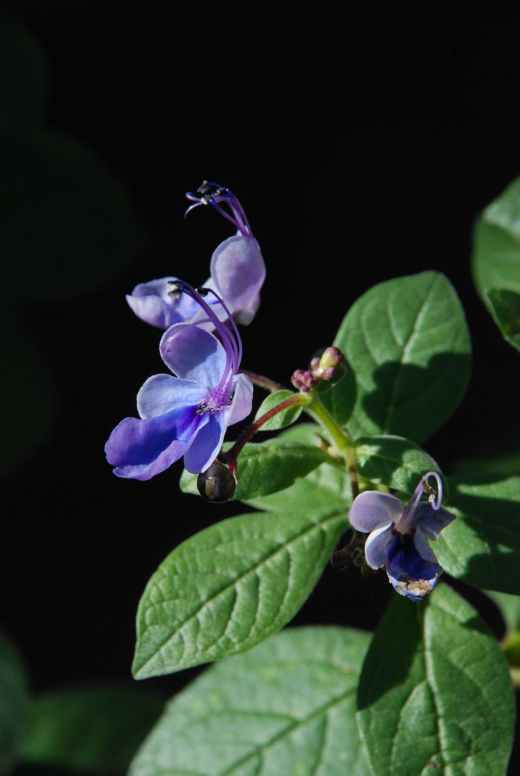Better in the ground: Caryopteris divaricata
Yesterday I wrote about my albizia which was in a holding loop because I was worried it would not thrive in the garden. Today is a different plant but the same problem.

The plant is Caryopteris divaricata. I bought it two years ago and I was so convinced that it was tender and wouldn’t like the garden that I was reluctant to actually plant it. Quite what I thought was going to happen if I didn’t plant it I am not sure. It remained it its small pot in the poly tunnel the first year and grew weakly in summer. I was convinced it hated me. I left it out the following winter, more out of forgetfulness than by design, and it was rather neglected so I was surprised, this spring, to see it had a few small shoots that the snails had left alone. And so, tardily, it got planted in a well-drained, sunny bed, newly finished, by the pond, this spring. Well it just goes to show that plants do better when you plant them out than when you torture them in small pots!
Despite minimal watering in the dry spells this summer, it has gently grown into a decent plant about 30cm wide and 45cm high. And yesterday the first flower opened. And perhaps you can see a reason for my foolishness.
To my eyes this is not a caryopteris – at least not as I know them. Most are shrubby with tiny flowers. This is herbaceous and the flowers look VERY like Clerodendrum ugandense. I managed to find my photo, which proves my filing is working.

Anyway the flowers of that are very similar but a softer, baby, blue and, admittedly, more beautiful. But the flower structure is very similar. But my confusion stems from caryopteris being in Lamiaceae, the mint family and clerodendrum is in the verbena family. Or is it? Those busy botanists have moved the genus into the Lamiaceae now. And Clerodendrum ugandense is now Clerodendrum myricoides ‘Ugandense’ – no wait – it is Rotheca myricoides. None of this really bothers us because my plant is a caryopteris – for now.

Caryopteris divaricata is from the Himalaya and should be hardy in most gardens. The fact that it survived winter in a small pot seems to confirm this. It is, like most caryopteris, intolerant of wet soils. In fact I planted a more standard caryopteris two years ago and it faded away, possibly a contributory factor in my fear of planting this one. I have lost quite a few plants to ‘trench foot’ but I am learning about my site and soil so these losses should diminish. Caryopteris divaricata should be covered in flowers that are produced at the top of the plant at the ends of the shoots and in the leaf axils. They are attractive to butterflies, though with only one flower open so far, that is hard to tell.
What is more apparent though, is the unpleasant smell of the, rather nettle-like, foliage. It has the same, resinous smell as some plectranthus. I suspect that the shoots tips would be attractive to capsids and shield bugs but there is no sign of that at present. The leaves are in pairs, up the square stems – very Lamiaceae-like. You could easily think this was an agastache or nepeta till it flowers.
It will be interesting to see how it does. As it is, I am full of hope and I am expecting good things. The flowers are individually pretty and if there was a cloud of them I would be delighted. I have it beside some late kniphofia and the two should look well together. It is not going to be a mass of colour but, at this time of year, all colour is welcome. It should be easy to propagate from summer cuttings but I will let it grow in peace this year.
It is often listed as the cultivar ‘Blue Butterflies’ but how this is different I can’t tell. There is also a variegated form called ‘Snow Fairy’ with brightly white-edged leaves but does not produce many flowers, as far as I can tell. I have not seen it.
Interesting plants